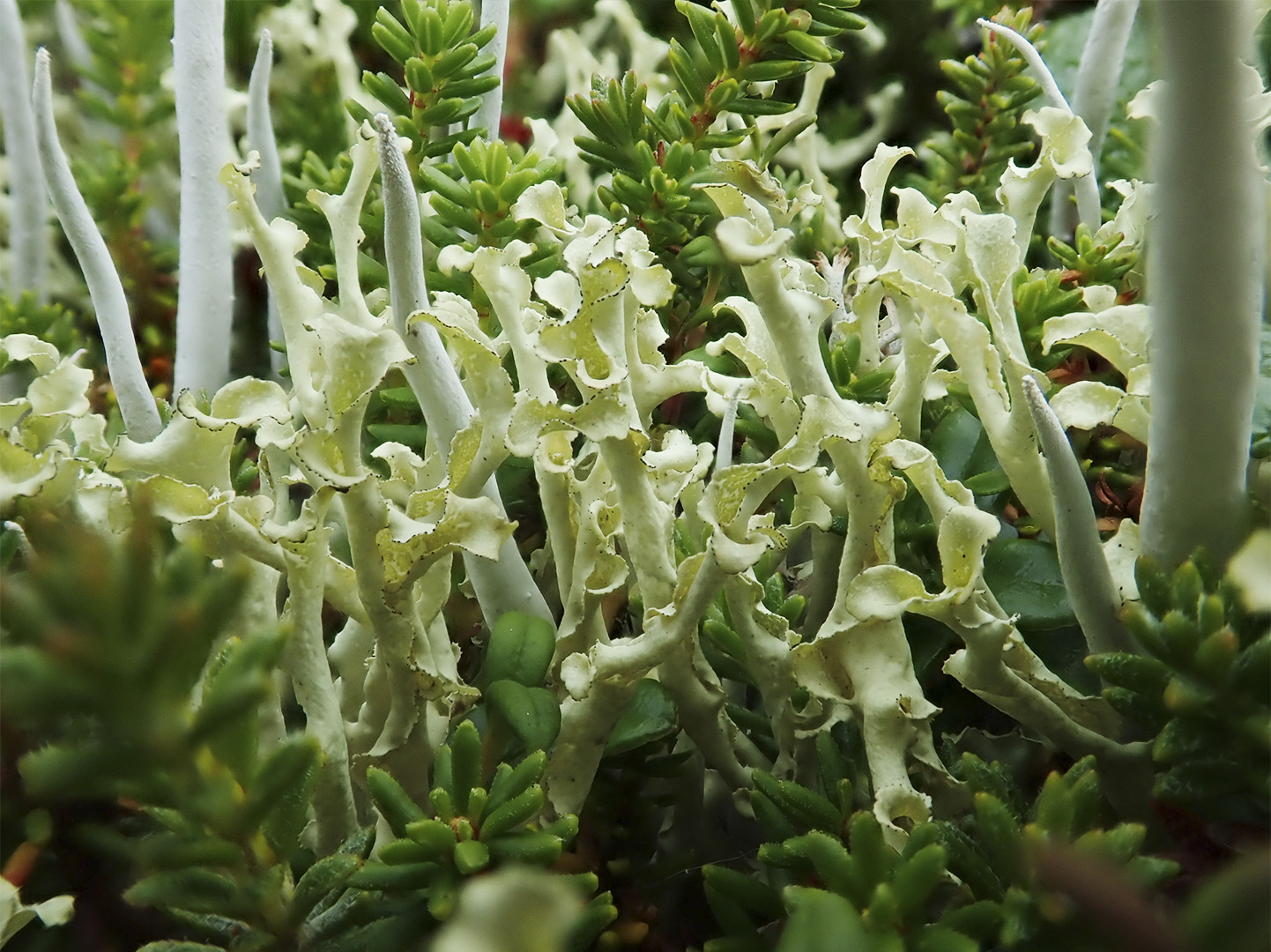In 2019, scientists from the V.L. Komarov Russian Academy of Sciences and St. Petersburg State University for the first time in history conducted a special study of lichen diversity on Medny Island. This year Dmitry Gimelbrant and Irina Stepanchikova returned to the protected Commander Islands to study the lichen flora of the other islands of the archipelago.
Scientists have carried out work in different parts of Bering Island, on Toporkov and Ary Kamen Islands. During this season, they managed to lay more sampling areas and collect representative material for further laboratory study.
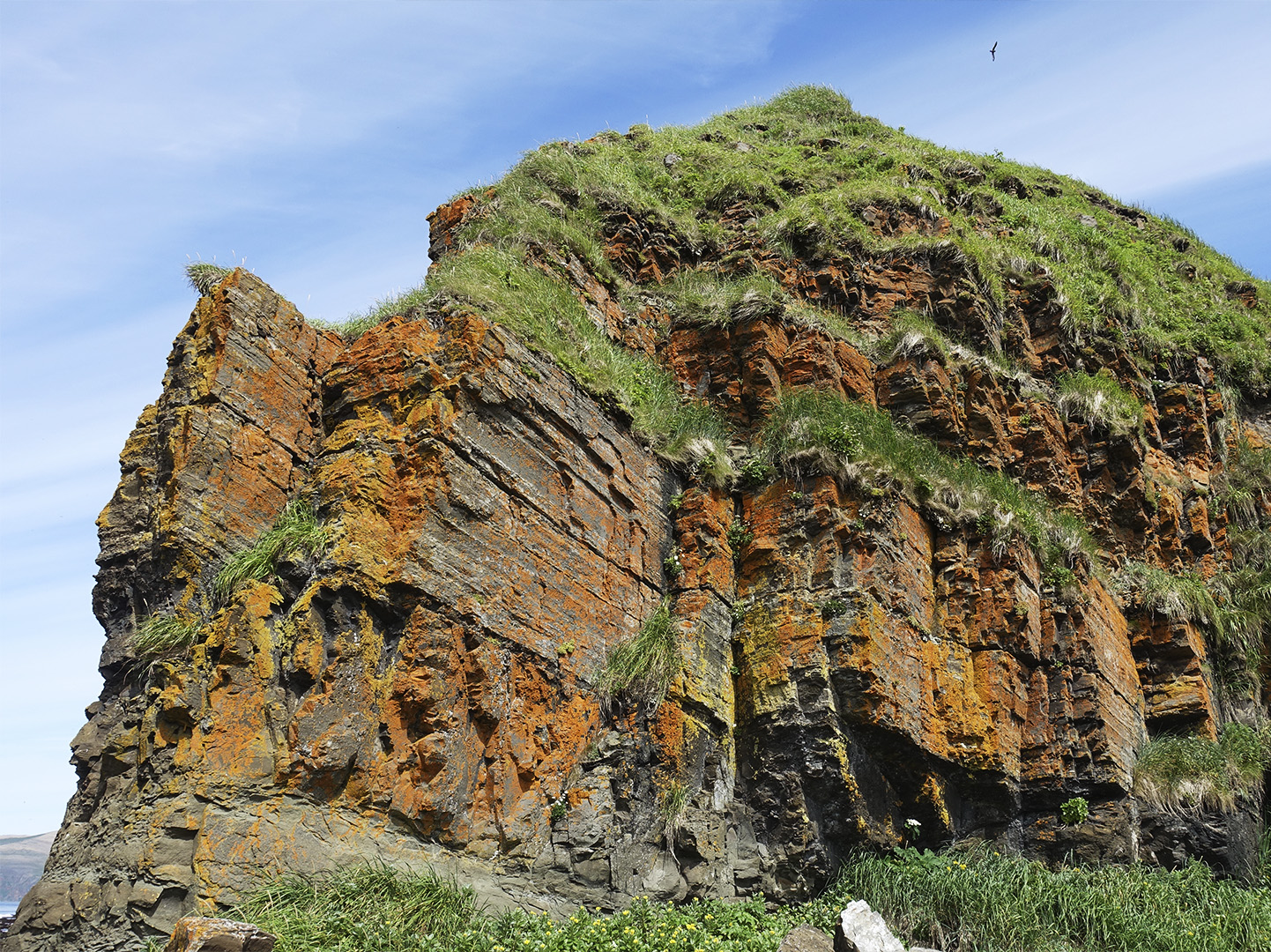
Coastal cliffs attract seabirds, which contributes to the formation of special communities of lichens. Photo - Dmitry Gimelbrant
“Toporkov and Ary Kamen islands differ sharply from Bering and Medny in terms of the species diversity of lichens. Large colonies of birds leave their mark. In places where birds gather, there are mainly ornithocoprophilous communities, which thrive in conditions of an excess of nitrogen and phosphorus compounds contained in guano,” the researchers said. The species diversity of lichens on the “bird” islands is small and consists of a stably repeating series of species. The rest of the lichens are not able to survive in cohabitation with birds and the salty spray of the ocean. In the field part of the research, about 20 species were found here.
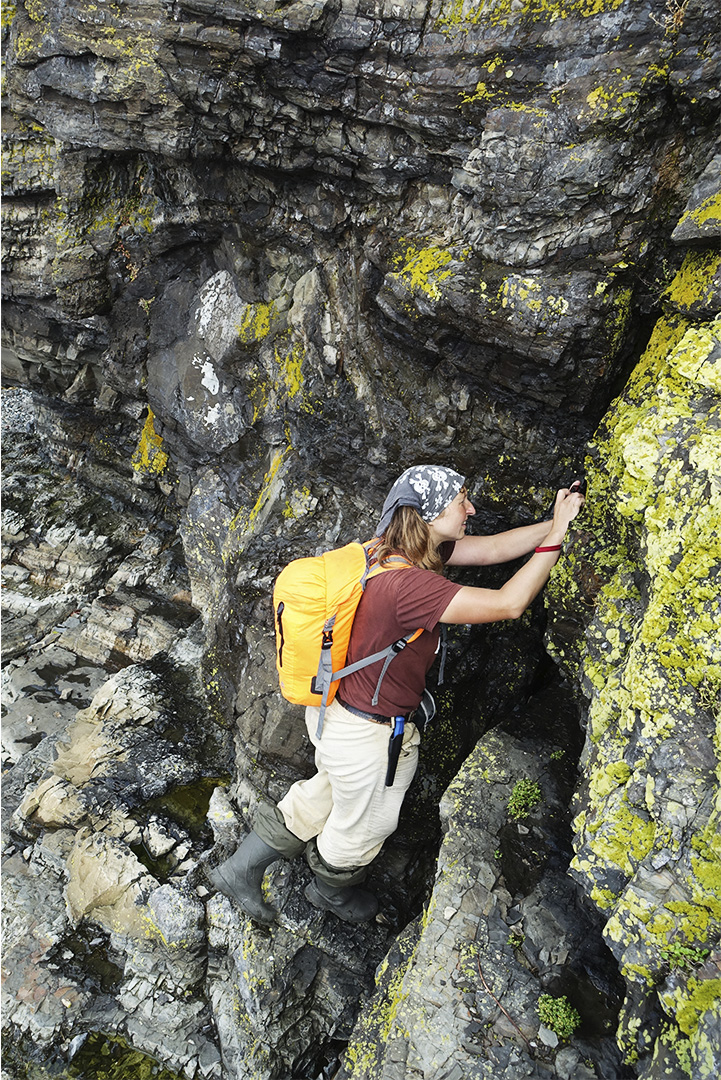
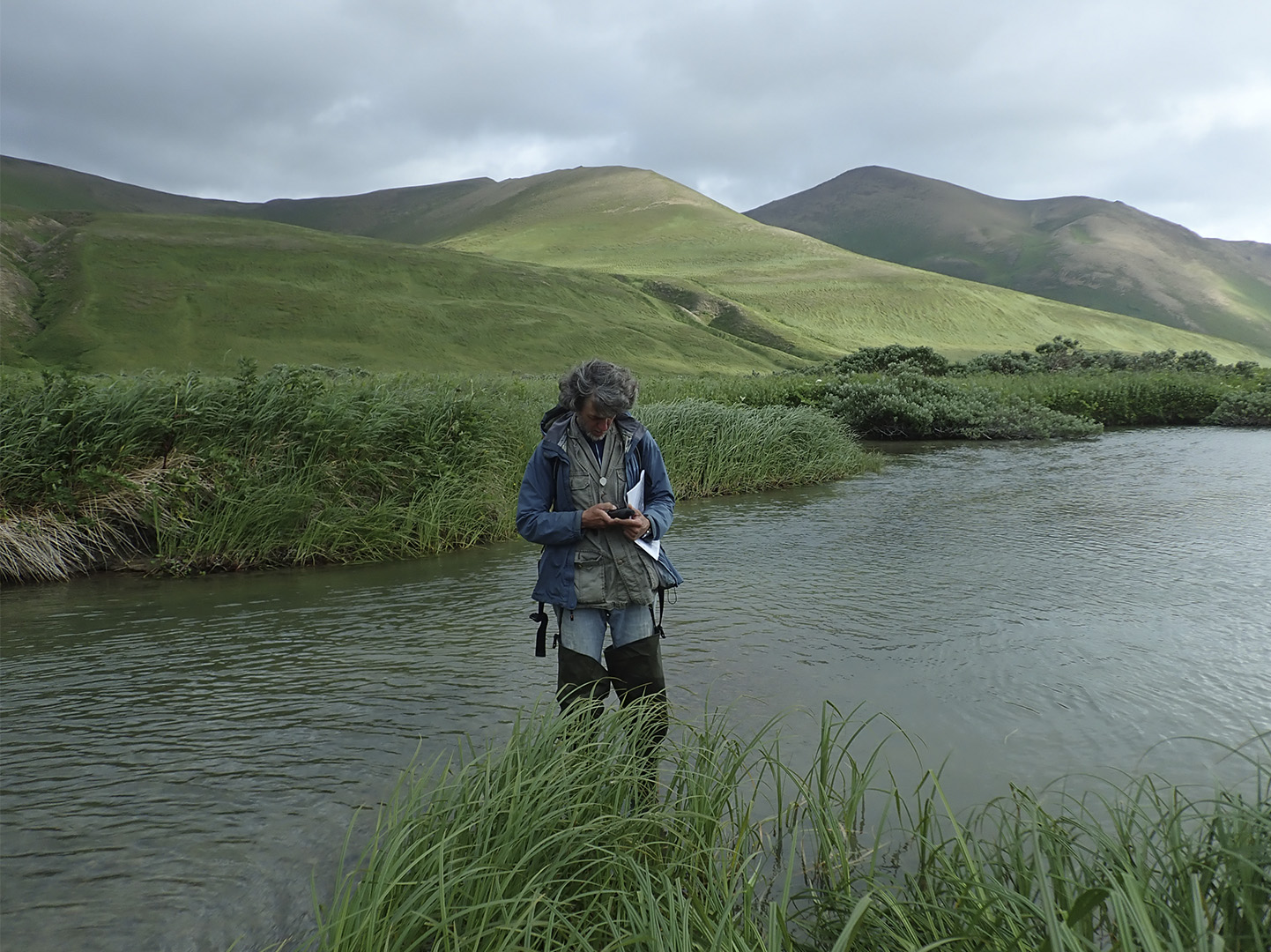
In search of lichens, scientists have to find themselves in the most unexpected places. Photo - Dmitry Gimelbrant and Irina Stepanchikova
On large islands, these species are noted in combination with many others. Dmitry and Irina knew what to expect from Bering Island. They managed to prepare by studying materials from the only study of the lichen flora of the island, conducted back in 1879. However, scientists are surprised to note that only 150 species of lichens were prelimenary discovered on Bering Island, and on Medny Island, at the same stage of work, there were about 170 of them, although much more sample plots were laid on the larger Bering Island.

Cetraria kamczatica is a ground tundra species listed in the Red Book of Russia. Photo - Irina Stepanchikova
What is the reason for the lower species diversity of lichens and their less active participation in plant communities of tundra? There is no exact answer to this question yet and, apparently, the search will require additional time. The first hypothesis was the influence of the introduced reindeer, whose wild relatives eat large quantities of lichen. Collectively, all types of ground lichens that deer feed on are called reindeer moss. Animals have to travel long distances to provide themselves with food, since reindeer pastures are restored only after 25-30 years. However, on the Commander Islands, the current population of reindeer seems to have given up eating lichens. Scientists have to find out when the animals changed their feeding behavior and whether the reindeer became the reason for the relatively low diversity and lesser phytocenotic role of lichens on Bering Island.
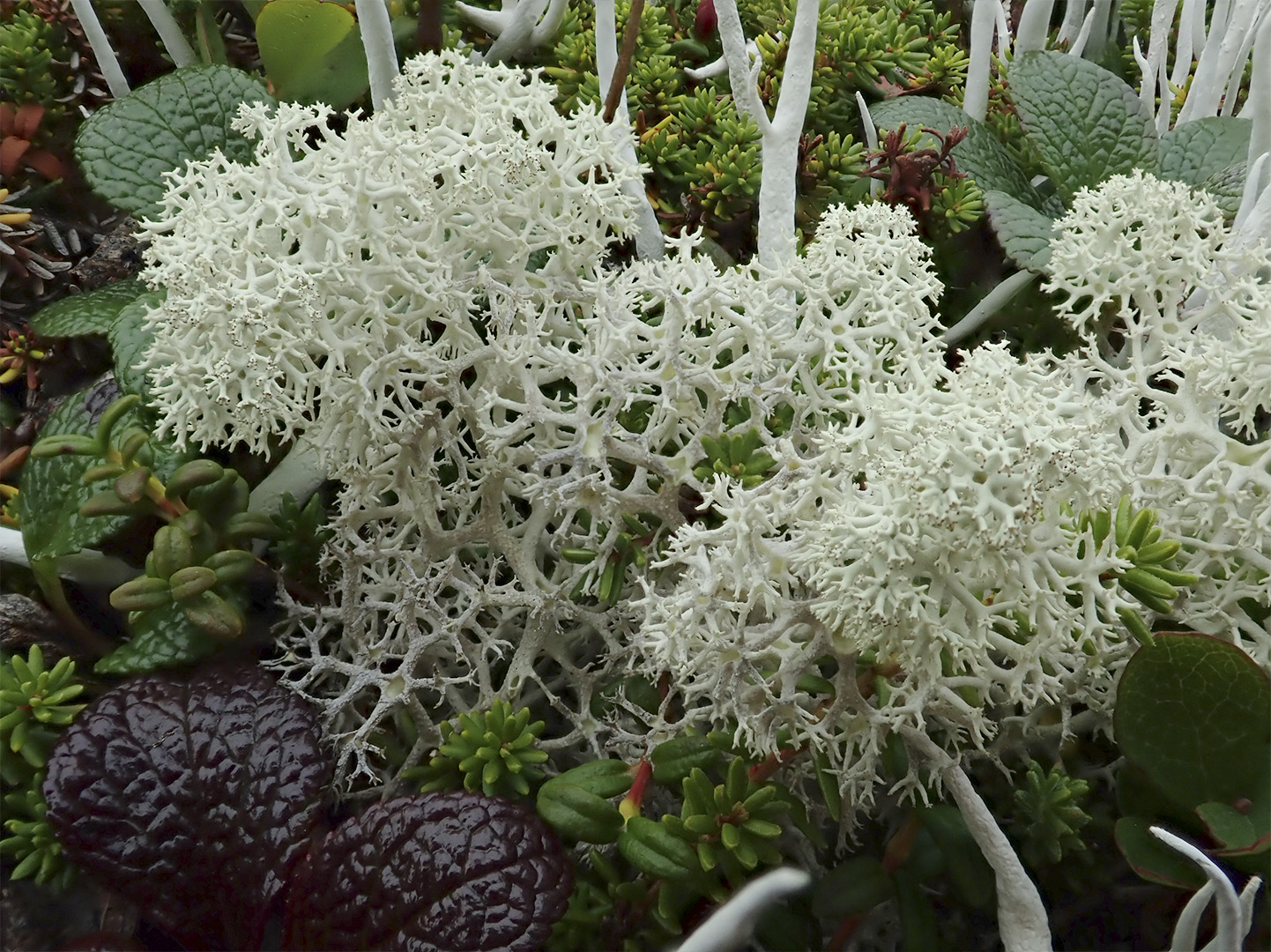
Cladonia stellaris is a widespread ground species, found in forests and tundra of the Northern Hemisphere, sensitive to disturbances in ground vegetation, and disappears when trampled. It is interesting that this species occures on Medny Island. Photo - Dmitry Gimelbrant
Another goal of the researchers was to understand how lichen communities were formed at the intersection of the flora of Northeast Asia and North America, where the species came from, how far they got and where the border between lichen flora of the two continents lies.









